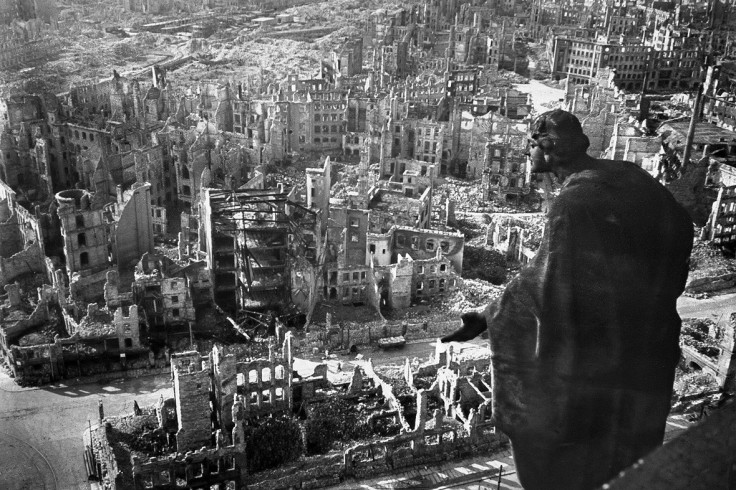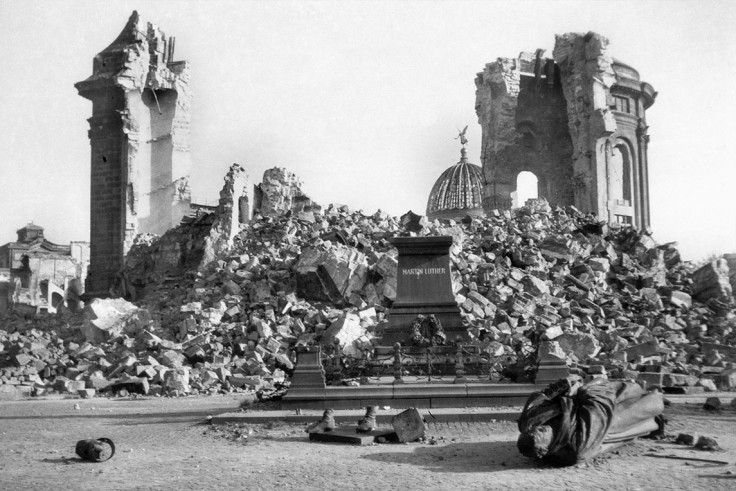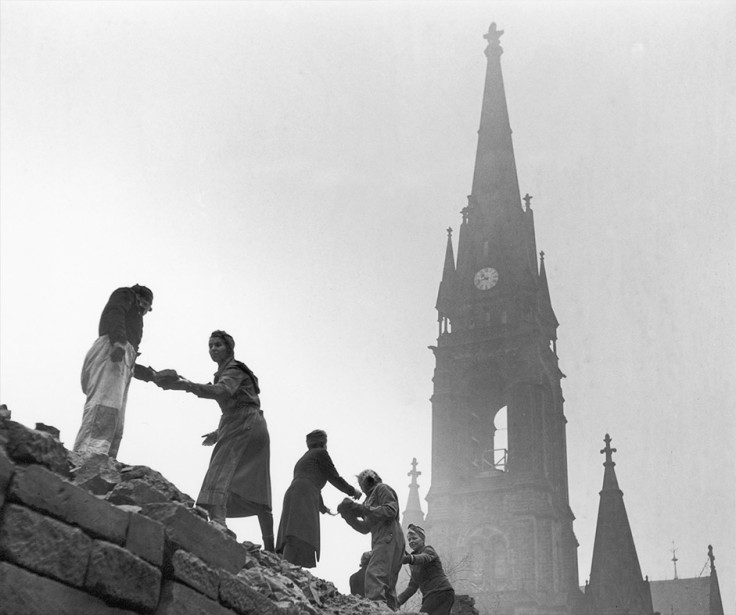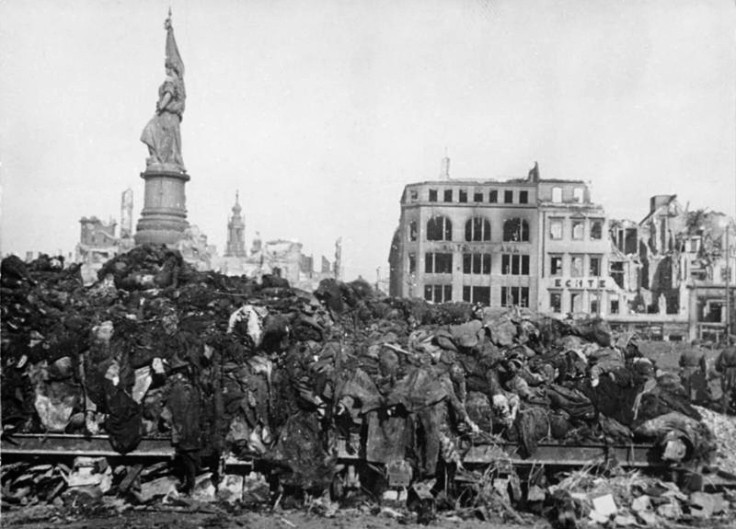70th anniversary of Dresden bombing: History of the controversial World War Two assault on Nazi Germany

The bombing of Dresden in February 1945 is remembered in history as one of the most controversial aspects of the Second World War, killing up to an estimated 25,000 in the Saxony city.
Seventy years ago, in four raids between 13 and 15 February 1945, 722 heavy bombers of the British Royal Air Force and 527 of the United States Army Air Forces dropped over 3,900 tonnes of incendiary devices and high-explosive bombs on the city, which had previously been spared by bombing up to that point. Decades on, post-war discussion of whether or not the attacks were justified has led to the bombing becoming a point of widespread controversy.
Dresden, "the Florence of the Elbe", had historically been northern Germany's cultural centre, filled with historic buildings and museums including the famous Palace and the Frauenkirche Cathedral. At the time of the attacks in the European Theatre, the city was filled with refuges escaping advances of the Red Army in the east. The official population of the city was 350,000, but is likely to have been significantly higher with the influx of refugees.

Dwindling Luftwaffe
The Allies were closing in on Nazi Germany. Adolf Hitler's counter-offensive against the Allies in the Ardennes forest of Belgium had failed and the Red Army had captured East Prussia, and they were closing in on Berlin. The German air force, the Luftwaffe, once the largest and most powerful in Europe, was diminished.
For eight days until the 11 February 1945, the "Big Three" Allied leaders, British Prime Minister Winston Churchill, US President Franklin Roosevelt and Soviet leader Joseph Stalin, met at Yalta to discuss Europe's post-war organisation. Churchill and Roosevelt promised to continue their bombing campaign against eastern Germany, in preparation for the Soviet forces.
But why was Dresden selected as a target? Some historians hold the view that any city involved in the Nazi war effort was a target, but other suggest that Dresden was not just a cultural centre but a production line for Nazi weapons and equipment.
Another theory proffered is that although Stalin was one of the "Big Three" Allied leaders, Churchill and Roosevelt believed he – and the Soviet Union – would be a problem after the war. As the Red Army advances against the Nazis, Dresden was bombed to show the Soviets that both the British and American forces were equally powerful – a warning against straying from established agreements.
Hitler's remaining forces had largely been sent to defend Berlin, leaving Dresden defenceless to the rapidly advancing Red Army. The city, as a result, was deemed an unlikely target for a major Allied air attack.

Carpet bombing
An important element of the Dresden attacks was the use of carpet bombing or saturation bombing – a large aerial bombing done in a way as so to inflict damage in every part of a selected area of land. German forces were the first to employ this tactic during the invasion of Poland in September 1939.
In Dresden, this type of attack destroyed enemy industry – factories – as well as civilian areas, causing huge firestorms that levelled the city. The Allies reasoned that carpet bombing Dresden would break German morale, devastate their economy and, it was hoped, force an early surrender. However, the Allies never admitted the used carpet bombing as a tactic, citing specific military targets in each attack.
Hundreds of RAF bombers descended on Dresden on the night of 13 February. The British forces dropped bombs and incendiaries over the city; fires ravaged the buildings, killing civilians in the thousands. As dawn broke, survivors were beginning to evacuate Dresden when the US air force destroyed the city's roads, railways and bridges.

Aftermath
On 15 February, another 200 US bombers continued the assault and in total, the US Eighth Air Force dropped over 950 tonnes of high-explosive bombs and more than 290 incendiaries on Dresden. The city would be targeted by three more US assaults before the end of the war.
The Allies claimed the attacks on 13 and 14 February were destroying lines of communication that would have hindered the Soviet offensive, as well as extinguishing German morale and force an early surrender. Yet the Germans did not surrender until May, when Hitler was dead and Berlin had fallen.
There was essentially nothing left of Dresden after the attacks. The onslaught of fire, as a result of the carpet bombing, burned at incredibly high temperatures across the city, killing thousands of civilians. The death toll remains disputed, due to varying political motives behind estimates from different countries, and the high – and unknown - number of refugees in the city.

© Copyright IBTimes 2025. All rights reserved.






















